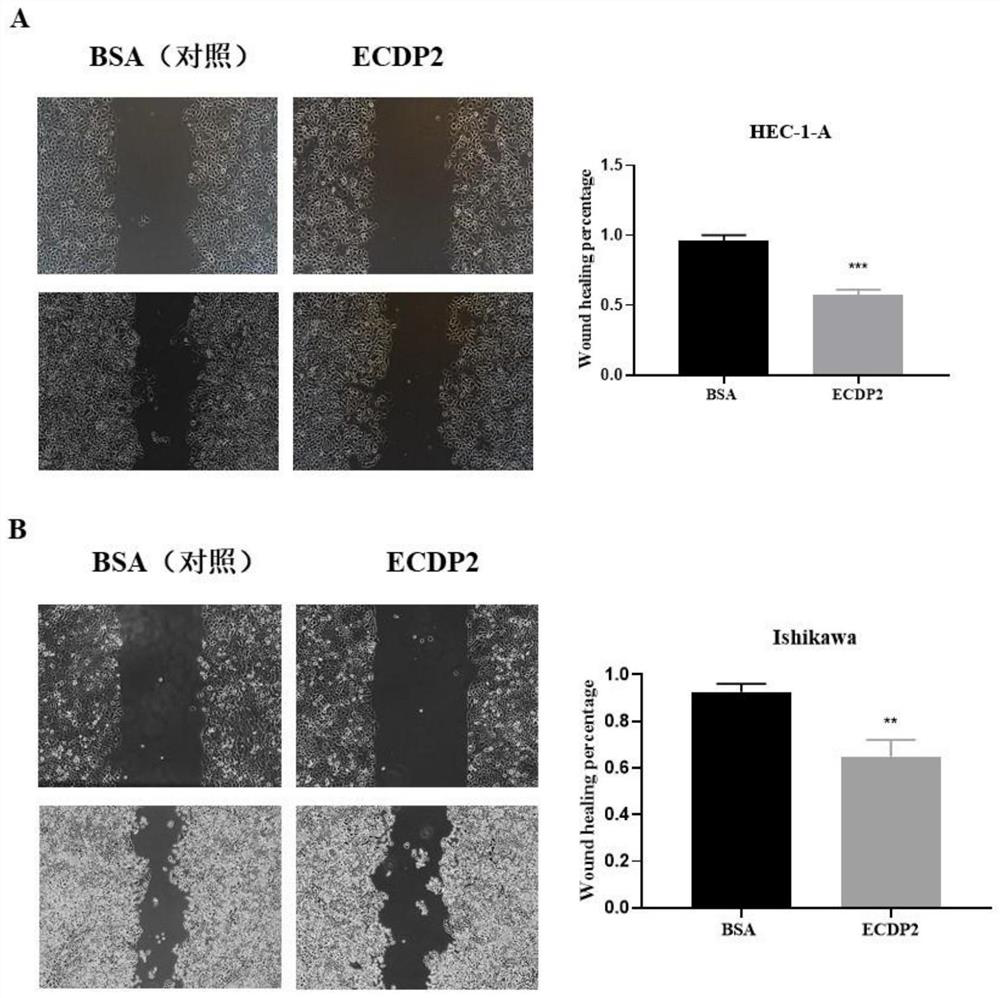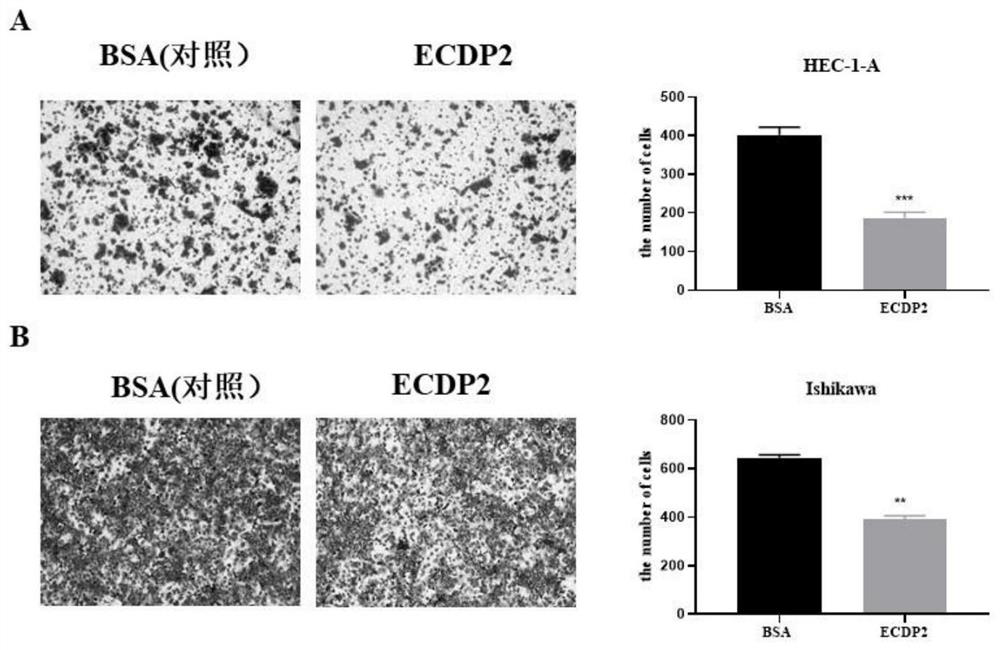Application of endogenous polypeptide in preparation of targeted medicine for preventing or treating endometrial cancer
An endometrial cancer, endogenous technology, applied in the field of medicine, can solve the problems such as the undisclosed drug mechanism of endometrial cancer, the unoptimistic prognosis, and the high metastasis rate of patients.
- Summary
- Abstract
- Description
- Claims
- Application Information
AI Technical Summary
Problems solved by technology
Method used
Image
Examples
Embodiment 1
[0024] The clinical samples collected were mainly from female patients who underwent surgery (Table 1). Six samples of cancer tissue from patients with endometrial cancer and 6 samples of uterine tissue from age-matched patients with benign uterine lesions were collected.
[0025] Table 1: Basic information of clinical samples
[0026] Endometrial cancer (n=6) Benign lesions (n=6) age 54.5±5.5 53.5±8.5 p>0.05 BMI 23.4±1.2 23.1±4.1 p>0.05
[0027] In Table 1, there was no statistical difference in age and BMI index between the two groups of patients (p>0.05).
[0028] The polypeptides derived from endometrial cancer tissue and normal endometrial epithelial tissue were extracted, and the expression profiles of polypeptides derived from endometrial cancer tissue and normal endometrial epithelial tissue were detected by i-TRAQ-labeled LC-MS / MS method. The results of mass spectrometry showed 873 differential polypeptides in the two groups of sa...
Embodiment 2
[0030] In order to screen suitable peptides for the purpose of research, we comprehensively consider: ① Higher expression abundance; ② Small differences within the group; ③ Good lipophilicity; ④ Conservation among species; , first screened out 2 polypeptides for preliminary research (Table 2). These two polypeptides are from the precursor protein LMNA and NOVA2 respectively. For the convenience of presentation and research, we named them ECDP1 / 2 (Endometrial Cancer Derived Peptide1 / 2, ECDP1 / 2) respectively. The amino acid sequence is shown in SEQ ID NO.1 to SEQ ID NO.2. Among them, ECDP1 was highly expressed in endometrial cancer tissue; ECDP2 was low expressed in endometrial cancer tissue.
[0031] Table 2: Physicochemical properties and species conservation analysis of target peptides
[0032]
[0033]
Embodiment 3
[0035] 1. Cell viability detection experiment (CCK-8 experiment)
[0036]Ishikawa cells used in this experiment were purchased from Jiangsu Kaiji Biotechnology Co., Ltd., and HEC-1-A cells were purchased from Shanghai Institute of Biological Cytology, Chinese Academy of Sciences. CCK8 reagent was purchased from Nanjing Novizan Biotechnology Co., Ltd., and RPMI-1640 medium was purchased from Jiangsu Kaiji Biotechnology Co., Ltd.
[0037] HEC-1-A and Ishikawa cells in the logarithmic growth phase were taken, counted after trypsinization, and seeded into 96-well plates at 5000 cells / well, with 6 auxiliary wells for each concentration. After 4-6 hours of cell attachment, add CCK8 detection solution (10 μL LCCK8 + 90 μL RPMI-1640 serum-free medium) to each well, and incubate for 2 hours to detect the absorbance value with a microplate reader, which is recorded as 0 hour. At the same time, the cells were treated with different concentrations of peptide ECDP2 working solutions (0ng / ...
PUM
 Login to View More
Login to View More Abstract
Description
Claims
Application Information
 Login to View More
Login to View More - R&D
- Intellectual Property
- Life Sciences
- Materials
- Tech Scout
- Unparalleled Data Quality
- Higher Quality Content
- 60% Fewer Hallucinations
Browse by: Latest US Patents, China's latest patents, Technical Efficacy Thesaurus, Application Domain, Technology Topic, Popular Technical Reports.
© 2025 PatSnap. All rights reserved.Legal|Privacy policy|Modern Slavery Act Transparency Statement|Sitemap|About US| Contact US: help@patsnap.com



